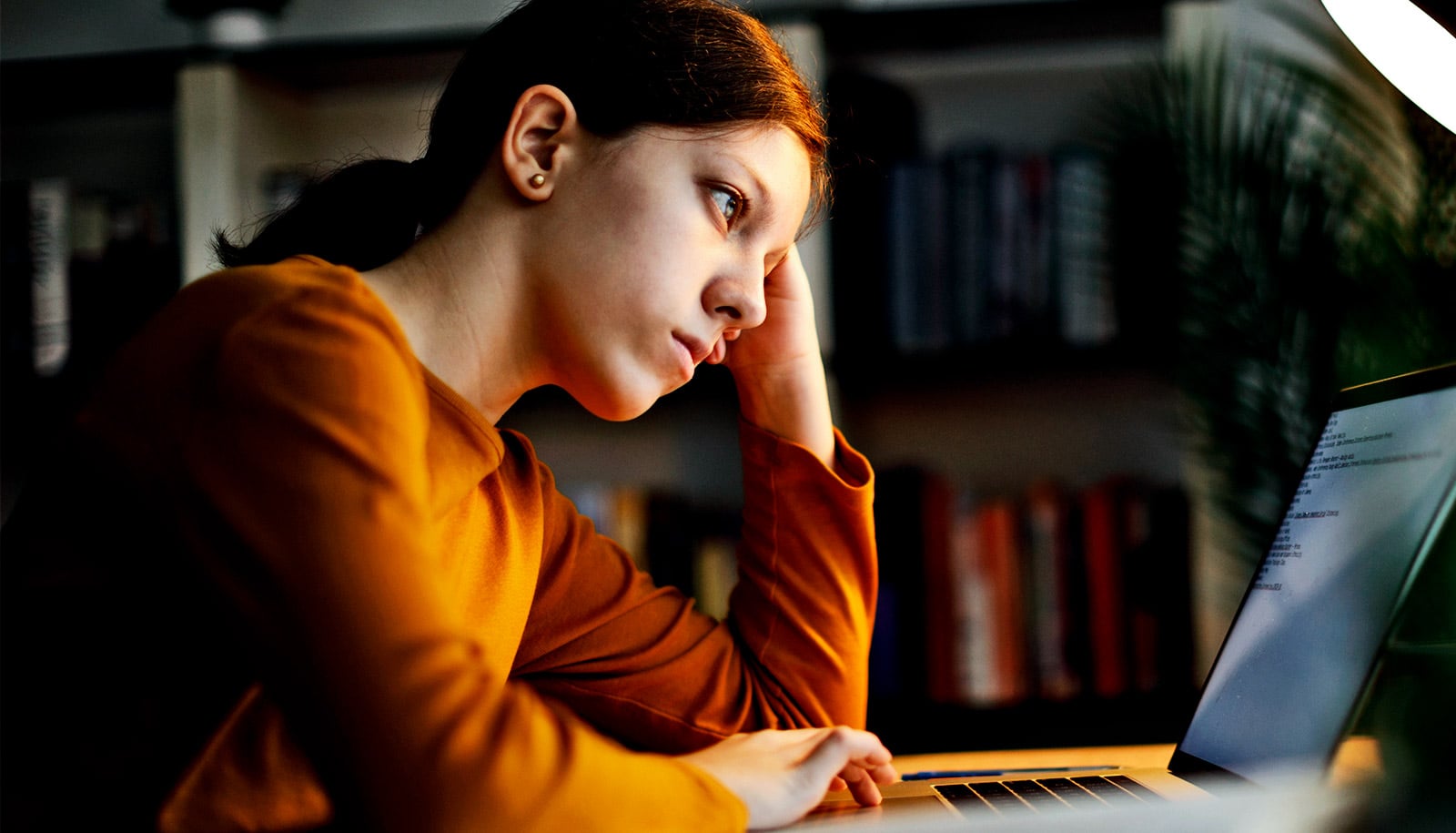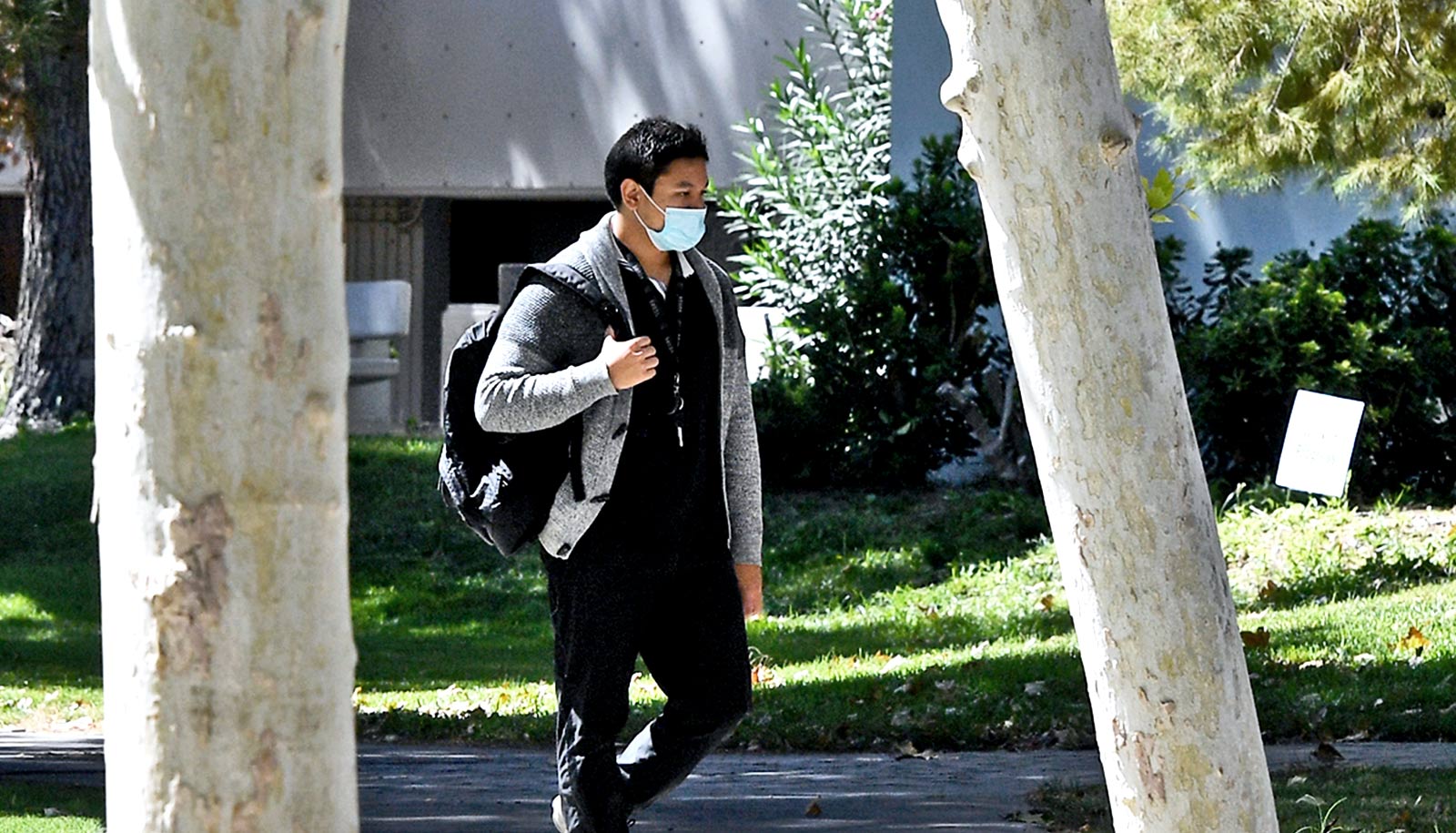A new study of students at seven public universities in the United States pinpoints risk factors that may place students at higher risk for negative psychological effects related to the COVID-19 pandemic.
Factors associated with greater risk of negative impacts include the amount of time students spend on screens each day, their gender, age, and other characteristics, the researchers report.
“We want students to know it’s OK to ask for help. We want them to reach out to get support. We want them to know: You don’t have to go at it alone.”
Research has shown many college students faced significant mental health challenges going into the COVID-19 pandemic, and experts say the pandemic has added new stressors. The new findings in PLOS ONE could help experts tailor services to better support students.
Researchers drew the observational study from a survey of more than 2,100 undergraduate and graduate students in the spring of 2020, when the students at all the universities included in the study had shifted to studying remotely.
“The pandemic is problematic for everyone, and we know that it’s especially problematic for students who are eager to experience the unique social atmosphere that college life has to offer,” says coauthor Lincoln Larson, associate professor of parks, recreation, and tourism management at North Carolina State University. “COVID-19 has thrown a wrench into all of that. Our study found the pandemic is clearly taking a significant psychological toll on students.”
In the survey, researchers asked students about the extent to which they felt negative emotions like fear, guilt, irritability, stress, and worry when they thought about COVID-19. Researchers also asked an open-ended question about how their feelings have changed since the start of the pandemic.
In the open-ended responses, students most commonly reported feeling unmotivated, anxious, stressed, and isolated. More than 21% of students said they experienced feelings related to lack of motivation: some thought it was difficult to concentrate, and others felt unproductive or that they were procrastinating. More than 17% said they felt anxious.
When the researchers analyzed students’ responses to questions about the extent to which they felt specific emotions, they found 45% of students across the seven universities experienced a high risk of psychological impacts. Forty percent of students had a moderate psychological impact risk, and just 14% of students were in the low-risk category.
The researchers used the data to identify characteristics linked to greater psychological impact from the pandemic. Female students, younger students aged 18 to 24 years, students who had more than eight hours per day of screen time, and students who knew someone who contracted COVID-19 were more likely to experience negative psychological impacts from the pandemic, researchers found when they analyzed all of the factors that contributed to mental health risk.
“Our study documents that nearly half of college students were at a severe handicap in terms of their quality of life, education, and social relationships because of their mental health during the early stages of the pandemic,” says lead author Matthew Browning, an assistant professor at Clemson University. “It also identifies the risk factors that can help colleges and universities target interventions or messaging to encourage these students to come and get help.”
The researchers saw that in some cases, students’ race or ethnicity and socioeconomic status were linked to risk for high psychological impact when those factors were studied independently of others. Specifically, students who identified as Asian were at greater risk, as well as students with fair or poor health.
Spending two or more hours of daily time outdoors was linked to lower mental health impacts before adjusting for other risk factors. Researchers say those potential risk factors need further study.
Overall, they believe the findings could help universities tailor services for students.
“Campus leaders can devise creative interventions to facilitate social interactions and help students adopt more growth-oriented mindsets that turn this unique challenge into an opportunity,” Larson says. “While some screen time may be necessary in this era of social distancing, there are still ways for students to connect, get outdoors, and be active.”
Across the nation, mental health experts have been working to address a growing prevalence of mental health issues among college and university students. A survey of college presidents in the fall of 2020 from the American Council on Education, in partnership with TIAA Institute, found the top two most pressing issues for presidents of four-year institutions were mental health of students and mental health of faculty and staff.
On top of existing mental health challenges, the pandemic created new stressors, including increased isolation, says Monica Osburn, executive director of the North Carolina State University Counseling Center.
“Mental health was a significant challenge before COVID, and it absolutely exacerbated what students are feeling,” Osburn says. “If you think about it from a developmental perspective, there are many developmental milestones that this group is experiencing loss around.”
“Any good data is helpful data because it gives us areas to target to be able to support students to make change,” Osburn says of the study findings. “We want students to know it’s OK to ask for help. We want them to reach out to get support. We want them to know: You don’t have to go at it alone.”
The authors received no specific funding for the study.
Source: NC State



